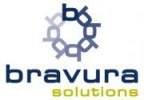Filter interviews by
Saviynt Interview Questions and Answers
18 Interview questions
Debounce is a technique to limit the rate at which a function is executed, especially during events like scrolling or resizing.
Debounce ensures a function is only called after a specified delay, preventing excessive calls during rapid events.
Commonly used in scenarios like search input, where you want to wait for the user to stop typing before making an API call.
Example implementation: function debounce(func, dela...
CSS pseudo-classes are special states of elements used to style them based on their state or position in the document.
Used to apply styles based on user interaction, e.g., :hover changes the style when a user hovers over an element.
Can target specific elements based on their position, e.g., :first-child applies styles to the first child of a parent.
Allows for styling based on form states, e.g., :checked styles a c...
React Context is for simpler state management, while Redux is a more robust solution for complex state management.
React Context is built into React and is ideal for passing data through the component tree without props drilling.
Redux is a standalone library that provides a predictable state container, making it easier to manage complex state logic.
Context is simpler and easier to set up for small applications, whi...
Garbage collectors manage memory by reclaiming unused objects, crucial in high-load scenarios to maintain performance.
Garbage collectors use algorithms like Mark-and-Sweep to identify and reclaim unused memory.
In a heavily loaded environment, they may operate in concurrent or parallel modes to minimize pause times.
Generational garbage collection optimizes performance by segregating objects by their lifespan, reduc...
A state machine is a computational model that transitions between states based on inputs and conditions.
Consists of states, transitions, and events.
Example: A turnstile that can be locked or unlocked based on user input.
Used in software design for managing complex behaviors.
Example: A traffic light system with states like 'Red', 'Green', and 'Yellow'.
Can be implemented in various programming languages using state ...
Implement a custom HashMap to efficiently search for a key value pair of a composite object.
Create a custom HashMap class with methods for adding key value pairs and searching for a specific key.
Implement a hash function to calculate the index of the key in the HashMap array.
For composite objects, override the hashCode and equals methods to ensure proper comparison and retrieval.
Generating all permutations of a given string using recursion and backtracking techniques.
Use recursion to generate permutations. Example: for 'abc', start with 'a', then permute 'bc'.
Backtrack by swapping characters to explore all possibilities. Example: swap 'a' with 'b' to get 'bac'.
Store results in a list or set to avoid duplicates. Example: for 'aab', store 'aab', 'aba', 'baa'.
Base case: when the current perm...
Convert a counter code from class component to functional component
Use useState hook to manage state in functional component
Remove 'this' keyword and constructor from the code
Update event handlers to use arrow functions or useCallback hook
Call stack stores function calls and local variables, while heap stores dynamic memory allocation.
Call stack is used for function calls and local variables
Heap is used for dynamic memory allocation
Call stack is limited in size and has a fixed memory allocation, while heap is larger and can grow dynamically
Example: Call stack is used to keep track of function calls in a recursive function, while heap is used to all...
CORS stands for Cross-Origin Resource Sharing and is a security feature implemented by browsers to prevent unauthorized access to resources on a different domain.
CORS allows servers to specify who can access their resources by adding specific HTTP headers to their responses.
It is used to protect against cross-site request forgery (CSRF) attacks.
For example, if a frontend application on domain A tries to make a req...
Saviynt Interview Experiences
19 interviews found
I applied via Campus Placement and was interviewed in Oct 2024. There were 3 interview rounds.
There are two questions, one Javascript and the other one a Java coding question. its medium level question
(4 Questions)
- Q1. Longest Increasing Subsequence
- Ans.
Find the length of the longest increasing subsequence in an array.
Use dynamic programming to keep track of the longest increasing subsequence ending at each index.
Iterate through the array and update the longest increasing subsequence length for each index.
Return the maximum length found in the dynamic programming array.
- Q2. Questions related to transaction deadlocks
- Q3. Linux Commands for DevOps
- Ans.
Linux commands commonly used in DevOps for automation and system management.
1. ls - List directory contents
2. cd - Change directory
3. pwd - Print working directory
4. mkdir - Make directory
5. rm - Remove files or directories
6. cp - Copy files or directories
7. mv - Move files or directories
8. grep - Search text patterns
9. ps - Display process information
10. top - Display and update sorted information about processes
11. c...
- Q4. Merge Sort and Quick Sort
(1 Question)
- Q1. General questions related to your personality
Interview Preparation Tips
Improve your communication skills and speak confidential
Be honest with the interviewer
if you are stuck with a question , ask for insights
Skills evaluated in this interview
I applied via LinkedIn and was interviewed in Sep 2024. There were 2 interview rounds.
(3 Questions)
- Q1. Given a counter code in class component, convert it to functional component
- Ans.
Convert a counter code from class component to functional component
Use useState hook to manage state in functional component
Remove 'this' keyword and constructor from the code
Update event handlers to use arrow functions or useCallback hook
- Q2. Write a code in react to post some data to a public url
- Ans.
Code snippet to post data to a public URL in React
Use the fetch API to make a POST request to the public URL
Convert the data to JSON before sending it in the request body
Handle the response from the server accordingly
- Q3. Css flextbox related questions
(4 Questions)
- Q1. What is the difference between normal function and arrow function?
- Ans.
Arrow functions are more concise and have lexical scoping, while normal functions have their own 'this' value.
Arrow functions do not have their own 'this' value, they inherit it from the parent scope.
Arrow functions are more concise and have implicit return.
Normal functions are more flexible and can be used as constructors.
Arrow functions cannot be used as constructors.
Arrow functions do not have 'arguments' object.
- Q2. Call stack and heap difference?
- Ans.
Call stack stores function calls and local variables, while heap stores dynamic memory allocation.
Call stack is used for function calls and local variables
Heap is used for dynamic memory allocation
Call stack is limited in size and has a fixed memory allocation, while heap is larger and can grow dynamically
Example: Call stack is used to keep track of function calls in a recursive function, while heap is used to allocate...
- Q3. What is CORS in web development?
- Ans.
CORS stands for Cross-Origin Resource Sharing and is a security feature implemented by browsers to prevent unauthorized access to resources on a different domain.
CORS allows servers to specify who can access their resources by adding specific HTTP headers to their responses.
It is used to protect against cross-site request forgery (CSRF) attacks.
For example, if a frontend application on domain A tries to make a request ...
- Q4. Map two array of objects and display the results in lists using react
- Ans.
Map two arrays of objects and display results in lists using React
Use the map function to iterate over each array of objects
Render the results in separate lists using JSX
Example: array1.map(item =>
- {item.name} )
Interview Preparation Tips
Skills evaluated in this interview
(2 Questions)
- Q1. Do you have experience in IGA
- Ans.
Yes, I have experience in Identity Governance and Administration (IGA).
Implemented IGA solutions to manage user access and permissions
Performed role-based access control (RBAC) configurations
Integrated IGA tools with HR systems for automated user provisioning
Conducted access reviews and audits to ensure compliance
- Q2. OKTA Integration experience and details
- Ans.
I have 2 years of experience integrating OKTA with various applications.
Implemented SSO using OKTA for multiple web applications
Configured user provisioning and deprovisioning with OKTA APIs
Integrated OKTA with Active Directory for user authentication
Skills evaluated in this interview
I applied via Naukri.com and was interviewed in Apr 2024. There was 1 interview round.
(1 Question)
- Q1. Everything required for Project Manager role
Interview Preparation Tips
The interview process was a month long started on the 1st of April until 22nd of April
On the 22nd of April I was told that the joining date would be 28th of Apriland will receive the offer in a couple of day, which never happened
When followed up the HR informed that the organization is going through some structural change and due to the change the offer letter will be released by the 3rd week of May
After multiple follow up and chasing the senior management through linked In, got a response that the position was occupied by a previous employee who took back the resignation.
After appearing for 2 HR rounds and 4 technical rounds this is what the panel had to reach out with. And that also with multiple chase.
Panel - Jyothi Anusha - HR, Nitin Gupta - Training Director, Suraj- Manager of Nitin Gupta, Sue Shreshta - Release Manager, Sapna Nair - Generam Manager
So if you come across Saviynt ALL THE VERY BEST
I applied via LinkedIn and was interviewed before Jan 2024. There were 4 interview rounds.
There was some Technical Questions along with one or two Coding Questions to code.
(2 Questions)
- Q1. String Manipulation like permutations of a given String.
- Ans.
Generating all permutations of a given string using recursion and backtracking techniques.
Use recursion to generate permutations. Example: for 'abc', start with 'a', then permute 'bc'.
Backtrack by swapping characters to explore all possibilities. Example: swap 'a' with 'b' to get 'bac'.
Store results in a list or set to avoid duplicates. Example: for 'aab', store 'aab', 'aba', 'baa'.
Base case: when the current permutati...
- Q2. Custom HashMap Implementation including some Efficient code to write to Search for a Key Value Pair of a Composite Object like Object within an Object within a Main Object.
- Ans.
Implement a custom HashMap to efficiently search for a key value pair of a composite object.
Create a custom HashMap class with methods for adding key value pairs and searching for a specific key.
Implement a hash function to calculate the index of the key in the HashMap array.
For composite objects, override the hashCode and equals methods to ensure proper comparison and retrieval.
(2 Questions)
- Q1. Technical Deep Dive including Scenario Based Questions like for a given Custom Scenario Designing a System and solving Scaling problems, Database Issues, etc.
- Q2. Past Experiences related to Technical Difficulties faced in the Past and solutions discussions.
(2 Questions)
- Q1. Expected CTC as it was a Contractual Position.
- Q2. Expected Joining Date for a 6 month Contract.
Interview Preparation Tips
I applied via Naukri.com and was interviewed in Mar 2024. There were 3 interview rounds.
(1 Question)
- Q1. About CoreJAva and spring
(1 Question)
- Q1. About IAM and Https certificates
(1 Question)
- Q1. Interview with Director and he was working the laptop and asking repeated things. His behavior is not good. First two rounds were very great and good attitude.
Interview Preparation Tips
(1 Question)
- Q1. Bst question based on easy to mediusm level
- Ans.
A Binary Search Tree (BST) is a data structure that maintains sorted order for efficient searching, insertion, and deletion.
A BST is a binary tree where each node has at most two children.
For any given node, values in the left subtree are less, and values in the right subtree are greater.
Example: Inserting 10, 5, 15 into a BST results in a root node 10, left child 5, and right child 15.
BST operations like search, inser...
- Q1. How does the garbage collector operate in a heavily loaded environment?
- Ans.
Garbage collectors manage memory by reclaiming unused objects, crucial in high-load scenarios to maintain performance.
Garbage collectors use algorithms like Mark-and-Sweep to identify and reclaim unused memory.
In a heavily loaded environment, they may operate in concurrent or parallel modes to minimize pause times.
Generational garbage collection optimizes performance by segregating objects by their lifespan, reducing o...
- Q2. What is the concept of a state machine?
- Ans.
A state machine is a computational model that transitions between states based on inputs and conditions.
Consists of states, transitions, and events.
Example: A turnstile that can be locked or unlocked based on user input.
Used in software design for managing complex behaviors.
Example: A traffic light system with states like 'Red', 'Green', and 'Yellow'.
Can be implemented in various programming languages using state desig...
(2 Questions)
- Q1. Asked about CSS , Flex
- Q2. Shared the screen and wrote code for different hooks in react
I applied via Naukri.com and was interviewed in Jun 2024. There was 1 interview round.
1st round they asked both on Manual testing question and Coding on java reverse string program
Interview Preparation Tips
Top trending discussions






Saviynt Interview FAQs
Some of the top questions asked at the Saviynt interview -
The duration of Saviynt interview process can vary, but typically it takes about less than 2 weeks to complete.
Tell us how to improve this page.
Saviynt Interviews By Designations
- Saviynt Python Developer Interview Questions
- Saviynt Project Manager Interview Questions
- Saviynt Senior Software Engineer Interview Questions
- Saviynt Team Manager Interview Questions
- Saviynt Engineering Manager Interview Questions
- Saviynt Senior Java Developer Interview Questions
- Saviynt Java Developer Interview Questions
- Saviynt Consultant Interview Questions
- Show more
Interview Questions for Popular Designations
Overall Interview Experience Rating
based on 16 interview experiences
Difficulty level
Duration
Interview Questions from Similar Companies
|
Consultant
48
salaries
| ₹10.5 L/yr - ₹28.5 L/yr |
|
Senior Software Engineer
39
salaries
| ₹14 L/yr - ₹44 L/yr |
|
Senior Engineer
34
salaries
| ₹13.5 L/yr - ₹32.2 L/yr |
|
Technical Lead
30
salaries
| ₹18 L/yr - ₹40.5 L/yr |
|
Software Engineer
27
salaries
| ₹5.5 L/yr - ₹21 L/yr |

Yodlee

Fingent

Bravura Solutions

CloudMoyo
- Home >
- Interviews >
- Saviynt Interview Questions
















